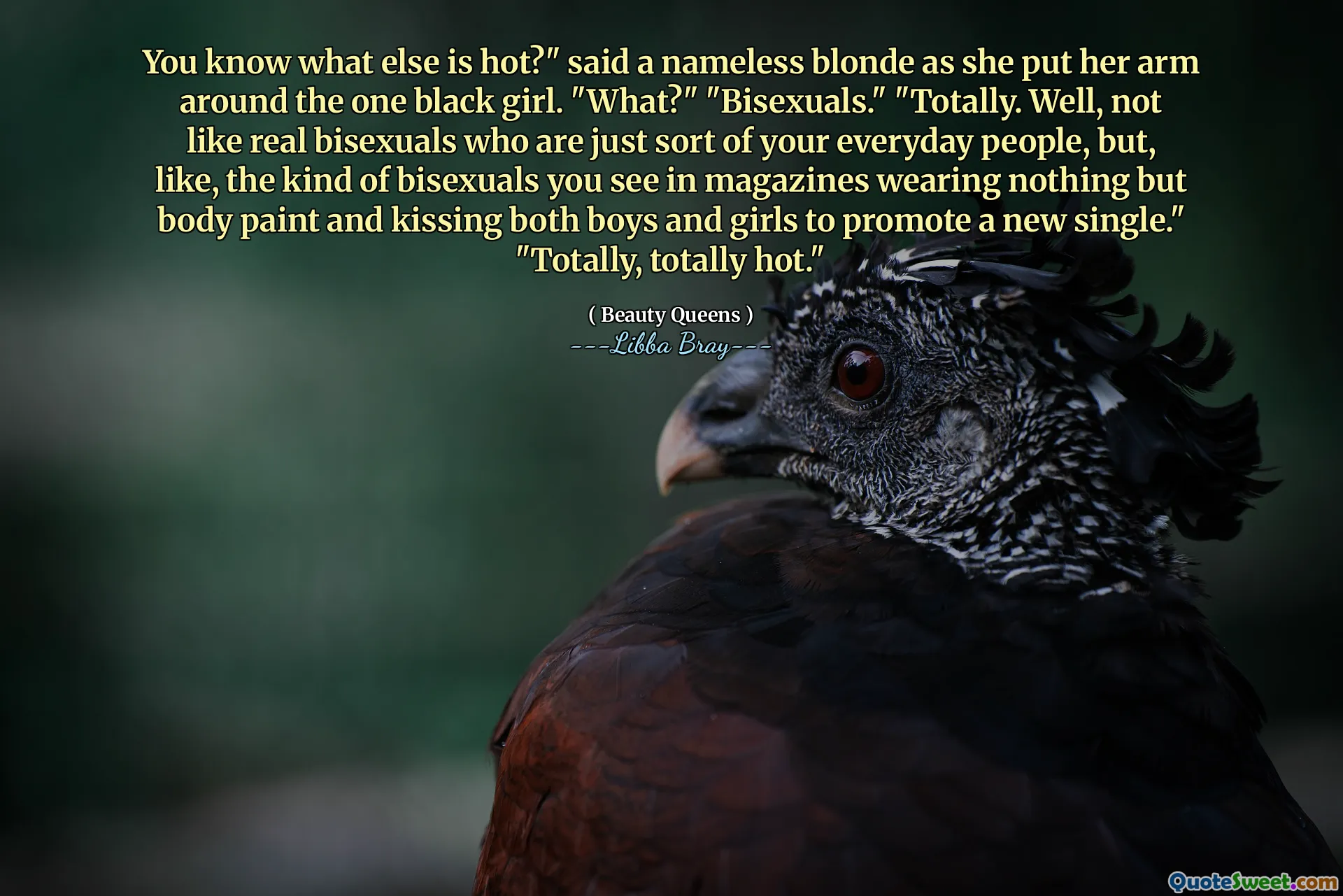
You know what else is hot?" said a nameless blonde as she put her arm around the one black girl. "What?" "Bisexuals." "Totally. Well, not like real bisexuals who are just sort of your everyday people, but, like, the kind of bisexuals you see in magazines wearing nothing but body paint and kissing both boys and girls to promote a new single." "Totally, totally hot."
[That's a compelling excerpt from Libba Bray's 'Beauty Queens,' highlighting both societal perceptions of sexuality and the spectacle often associated with sexuality in media. The passage captures a nuanced conversation that reflects the way sexuality, particularly bisexuality, is sometimes sensationalized or fetishized for entertainment and marketing purposes. It also underscores society's fascination with flamboyant portrayals of sexuality—where individuals are often reduced to their sexual expressions, especially in contexts like magazine photoshoots or promotional stunts. This scene might evoke reflections on how LGBTQ+ identities frequently navigate stereotypes and the lens of performance, sometimes overshadowing genuine personal identities. Additionally, the casual tone of the characters and their comments reveal underlying assumptions and the normalization of viewing sexuality as something to be admired or judged based on its outward presentation. It prompts us to think about both the visibility of bisexual identities and how they are represented in popular culture—either authentically or as sensationalized spectacles. Such representations could reinforce stereotypes or help increase awareness, depending on context. The excerpt smartly invites readers to consider whether society's take on sexuality is rooted in genuine acceptance or rooted in spectacle. It raises questions about authenticity, representation, and the societal gaze—whether we are comfortable with sexuality being a form of entertainment or promotional gimmick, and how much of that reflects real lives versus manufactured images. Overall, Bray’s writing provokes ongoing dialogue about these layered issues, making it a potent reflection on modern attitudes towards sexuality. It's a commentary that remains relevant across cultural conversations today, especially as discussions about gender, identity, and acceptance continue to evolve.











